KUØHN Station as of July 3, 2018
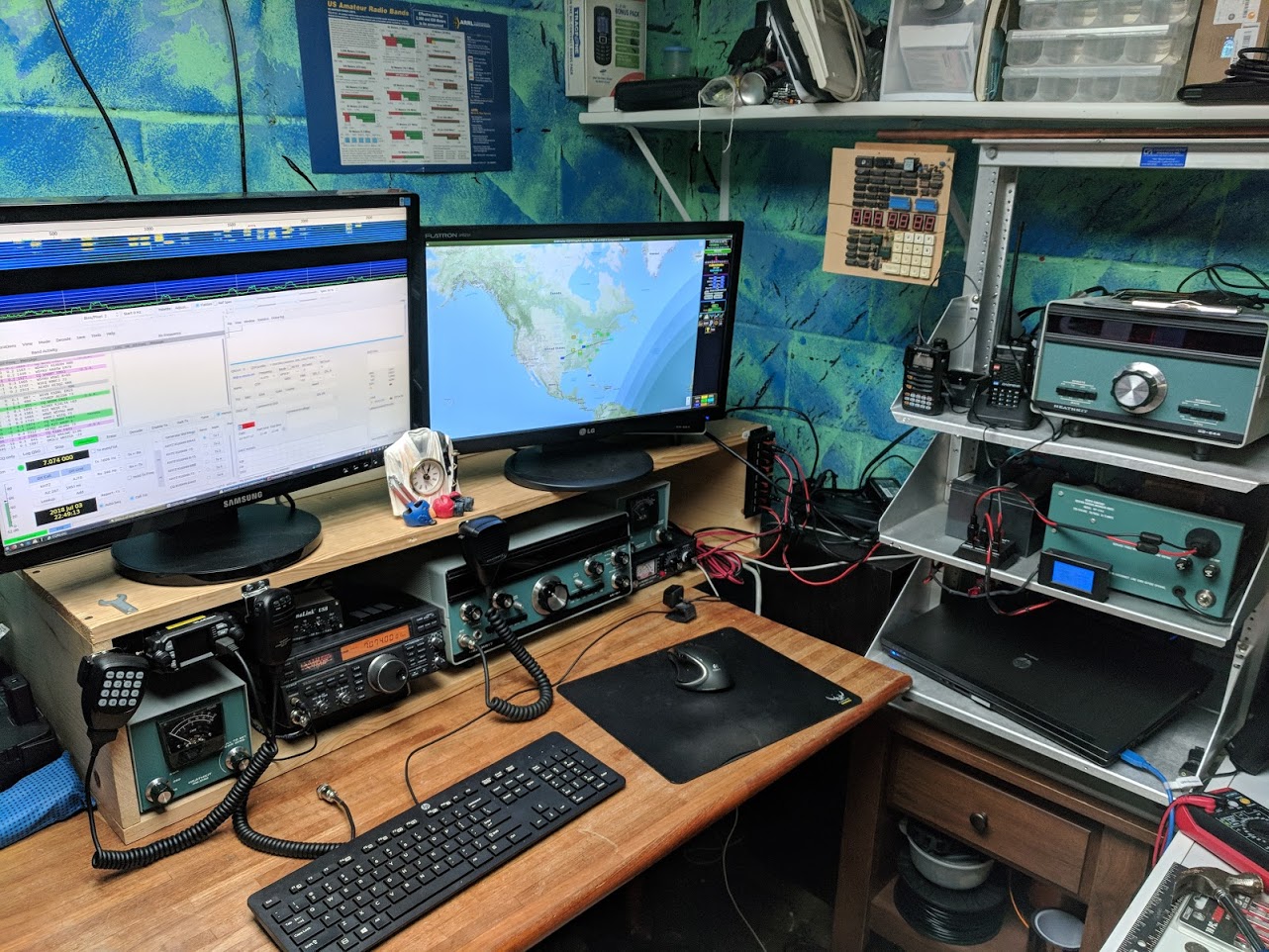
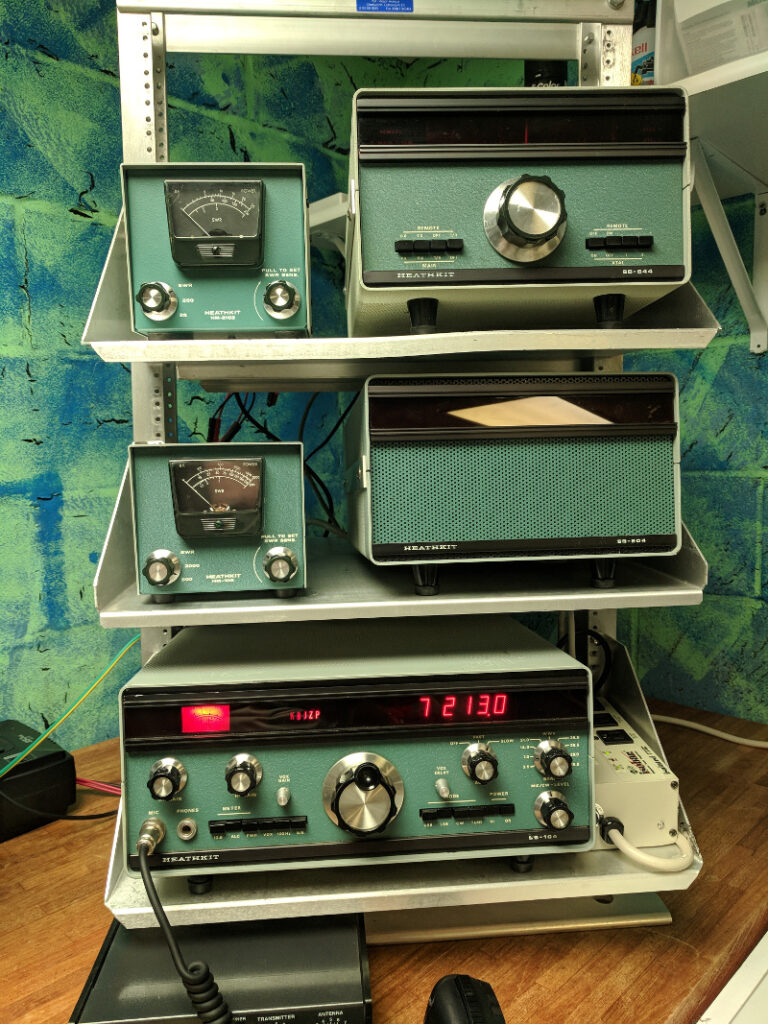
Heathkit SB-104⌗
This is my first HF rig, a Heathkit SB-104A. It’s no longer mounted in the rack as pictured to the left, but that picture gives a good idea of all the pieces in their original configuration. The only piece that does not belong to the SB-104A is the Heathkit 2 meter SWR meter on the upper left. Originally the speaker cabinet also contained the power supply. As you can see from the current configuration, I have removed the power supply and modified it with a power switch and modern PowerPole connectors. In the current picture the speaker is sitting a little behind the right monitor.
I bought this radio right after getting licensed from a ham who lived a few hours north of me. It was NOT a good decision. I would describe my relationship with this rig as love/hate for sure. It’s similar to my relationship with my 1976 MG Midget. I’ll probably never get rid of it, but I’ve resigned myself to the fact that I’ll spend more time working on it than I will spend using it.
When I bought the radio, it had power out with the tune button, but no power output from the microphone or CW key. It would have been nice to know this before getting the radio home. The only testing I did when I picked it up was to press Tune" as I didn’t have a Hi-Z mic for it. I’m not a good enough technician to start troubleshooting something this complicated from scratch, so I sent it over to RTO Electronics where it was repaired. Sadly, after receiving it back, the receiver would start cutting in and out. It was still under warranty from RTO, so I sent it back, and they discovered the SSB filter was physically broken. That was replaced and the radio was returned. When I tried putting it on the air, I continued to experience intermittent failure of both the transmitter and receiver. Ron, from RTO, thought the band switch was the culprit, and he was correct. A couple of blasts of DeoxIT and some polishing of the switch contacts and everything was good as new, until I went to take the picture of my station for this website. I fired up the SB-104A after a month or so of non-use, and noticed the last two 8 segment displays are no longer lighting up. Looks like I have more work to do the next rainy Saturday.
Yaesu FT-840⌗
In the summer of 2017, when my SB-104A was in the shop for the second time, I bought this FT-840 from the local ham shop for $400. I chose the FT-840 from the Used/Consignment selection as it was (barely) in my budget and it looked like it was brand new. The plastic protector was still on the screen. It also had a 90 day warranty from Radio City, so I thought it was a much safer bet than the Heathkit.
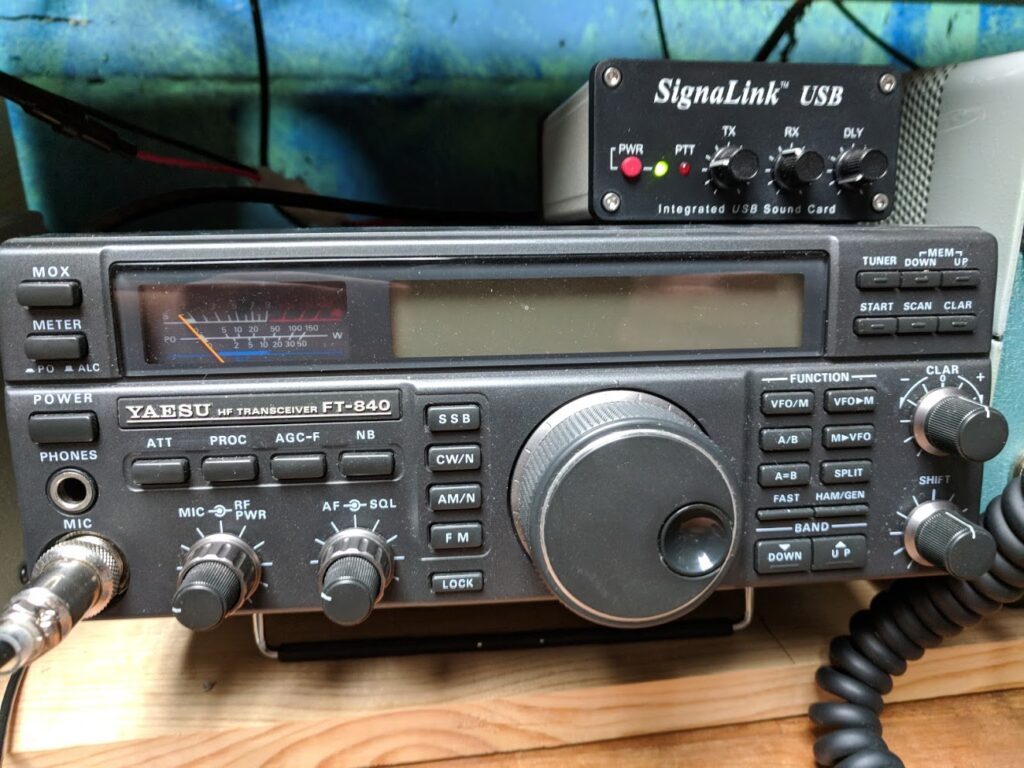
I do quite a bit of digital with this rig, and it has been fantastic for it. The SignaLink USB interfaces perfectly and the radio stays on-frequency and doesn’t have some of the stability/drifting issues others have complained about. Going from the serial number, it is one of the later FT-840s made. It has been a great, but basic, HF rig so far.
CAT control of the FT-840 has been my biggest challenge. I bought a cheap USB CAT cable from ebay, but CAT control would cut out shortly after the radio started transmitting. This would crash WSJT-X and cause other problems. The problem is for sure RF in the shack, and even with a bunch of torroids on the feedline and a 1:1 current balun as part of my homemade Carolina Windom OCFD, I can’t seem to get rid of it. I solved the problem by picking up a Bluetooth CAT adapter from a ham on eBay. I guess HF in the shack doesn’t mess too much with 2.4GHz bluetooth. Everything works great now.
Station Power and Distribution⌗
I am using the Heathkit HP-1144 from the SB-104A as the primary power supply for my station. You can’t beat the noise-free operation of an old linear. I made a few modifications to the supply from it’s original configuration in the speaker cabinet for stand-alone operation. I added a power toggle switch in the hole where the hardwired SB-104 power cord used to exit the chassis. I also added a panel-mount Andersen PowerPole connector for universal compatibility.
The power supply is directly connected to a Chunzehui PWRpath module. This float charges the two 8AH SLA backup batteries and provides seamless switching to battery power should AC power fail. This is connected to a fused PowerPole distribution block, with an a generic digital Voltmeter/Ammeter inline to monitor the draw of the station. In the pictures below you can see the meter’s LCD readout sitting in front of the power supply.
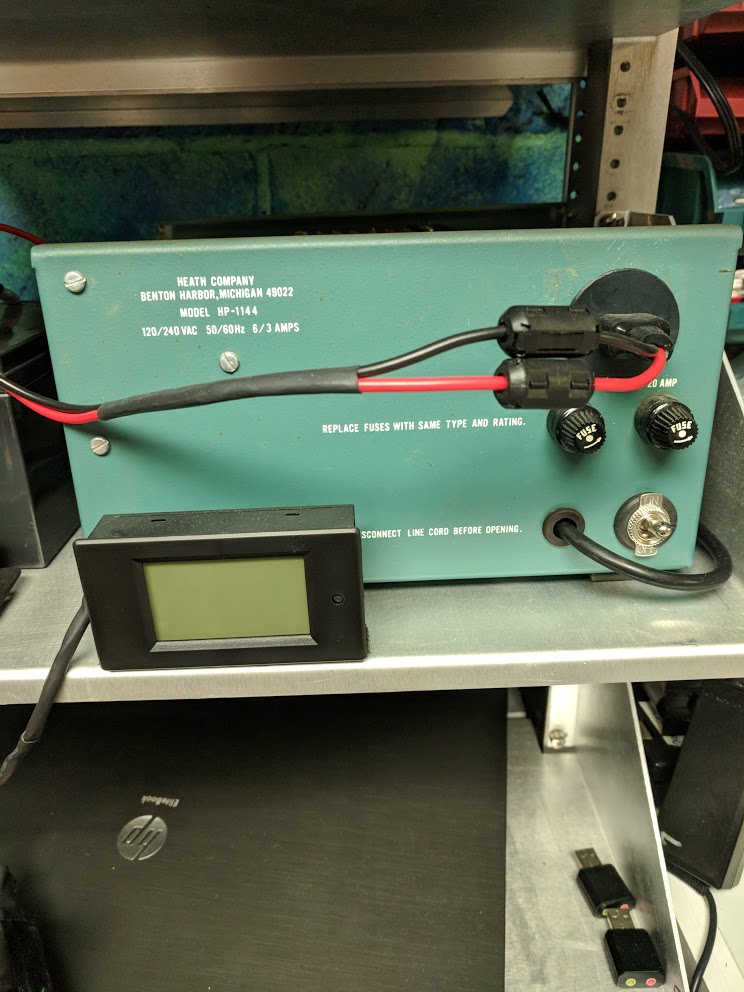

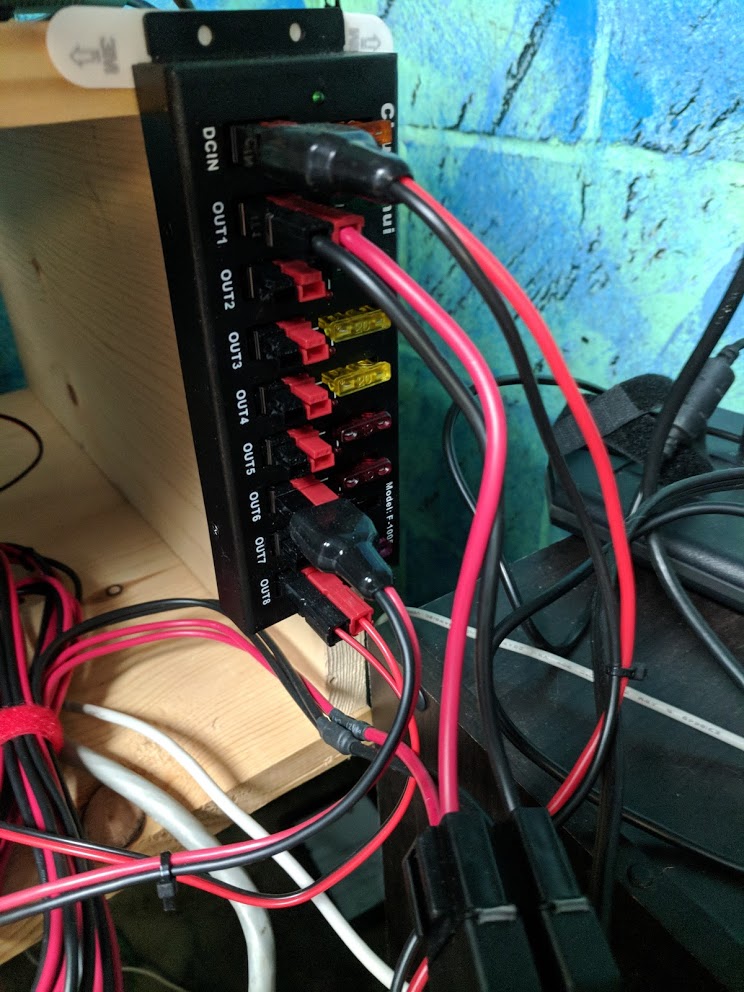
TalkCoop (QYT) KT-8900D.⌗
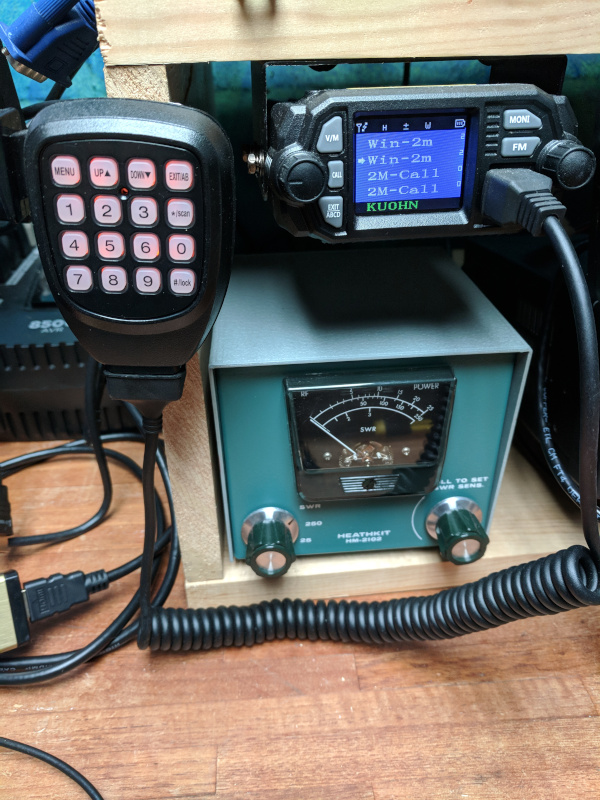
VHF and UFH in the shack are handled by a TalkCoop (QYT clone) KT-8900D. I bought this radio for two reasons. Primarily, it was cheap. I don’t do a ton of UHF or VHF in the shack, so I’m not really worried about having tons of features or anything. The second reason is the data port. I have an identical radio in my truck and, with a custom cable running to my Mobilinkd, I am able to do APRS over this rig with minimal effort. I have yet to use the data port on the shack radio, but building a homemade Mobilinkd is in my future so I can try to get connected to the packet BBS in Rochester.
If you’ve ever looked up this rig, you can see it’s reviews aren’t great. The display and rotary encoder(?!?!) are buggy, and the front end is easily overloaded. The radio in my truck opens the squelch every time a cow farts in the area. Luckily, I haven’t had many problems like that in the shack. I guess I’m just not close enough to any other transmitters. The fact that I’m in a rural location is probably the only reason this radio works for packet at all.